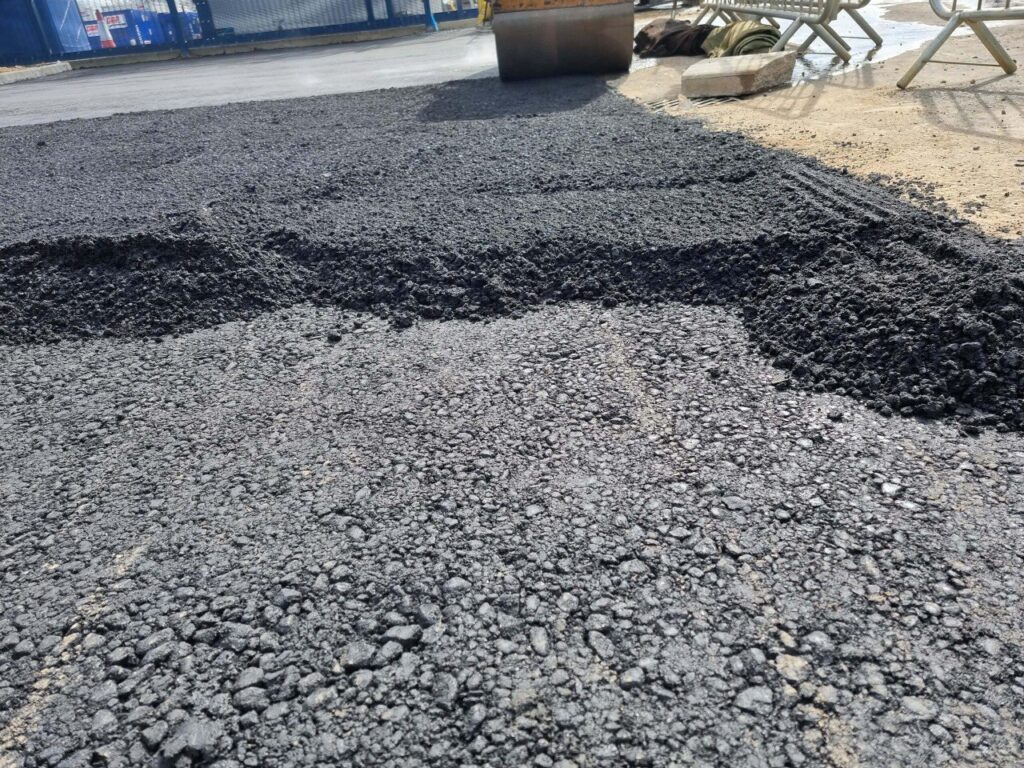Tarmac Roadway Safety Measures: Reflective Markings and Signage
Introduction: Safe and efficient roadways are essential for communities’ well-being and smooth traffic flow. In addition to proper maintenance, tarmac roadways rely on safety measures such as reflective markings and signage to enhance visibility, guide drivers, and reduce the risk of accidents. This blog post will explore the importance of reflective markings and signage on tarmac roadways and how they contribute to road safety.
Reflective Markings: Enhancing Nighttime Visibility
Reflective markings are essential for ensuring road safety, especially during nighttime and adverse weather conditions. Here’s why they matter:
Visibility in Low Light: Reflective markings, also known as retroreflective materials, bounce light from headlights back toward the driver’s eyes, making road markings highly visible at night.
Adverse Weather Conditions: Rain, fog, and snow can reduce roadway visibility. Reflective markings remain visible under such conditions, aiding navigation and preventing accidents.
Lane Differentiation: Reflective lane markings help drivers stay within their lanes, reducing the risk of lane departure accidents.
Pedestrian Safety: Reflective crosswalks and pedestrian lane markings are crucial for the safety of pedestrians, especially at night.
Longevity: Reflective markings have a longer lifespan than traditional road paint, reducing the need for frequent reapplication.
Types of Reflective Markings:
Painted Reflective Markings: These are applied as part of the road paint and contain reflective glass beads that enhance visibility at night.
Thermoplastic Reflective Markings: These pre-formed, durable markings include reflective glass beads for improved visibility.
Reflective Pavement Markers: Raised pavement markers are embedded in the tarmac and contain reflective materials. They provide tactile feedback to drivers and are highly visible.
Signage: Providing Vital Information
Road signs are another critical component of road safety, helping drivers make informed decisions and navigate effectively. Here’s why signage matters:
Information and Warnings: Signs convey essential information, including speed limits, upcoming hazards, and directional guidance.
Consistency: Standardised signage ensures consistency on roadways, reducing confusion for drivers.
Regulatory Compliance: Road signs communicate traffic laws and regulations drivers must adhere to.
Pedestrian Safety: Signs also provide information and warnings to pedestrians, ensuring their safety near roadways.
Emergency Response: Signs indicating emergency services, hospitals, and exits assist drivers during emergencies.
Common Types of Road Signs:
Regulatory Signs: These signs enforce traffic laws, such as stop signs, speed limits, and yield signs.
Warning Signs: Warning signs alert drivers to potential hazards, such as curves, intersections, and pedestrian crossings.
Informational Signs: Informational signs provide essential information, such as directions, distances, and points of interest.
Guide Signs: Guide signs offer directional information for drivers, including highway exits and rest areas.
Conclusion: Reflective markings and signage are integral to road safety on tarmac roadways. They improve visibility, guide drivers, and communicate important information, reducing the risk of accidents and ensuring smooth traffic flow. At Gillingham Driveways, we understand the importance of incorporating these safety measures into our road construction and maintenance projects to create safer and more efficient roadways for communities. By prioritising reflective markings and signage, we contribute to safer road infrastructure that benefits everyone on the road.
Call us on: 01634 564 190
Click here to find out more about Gillingham Driveways
Click here to complete our contact form and see how we can help with your driveway needs.

